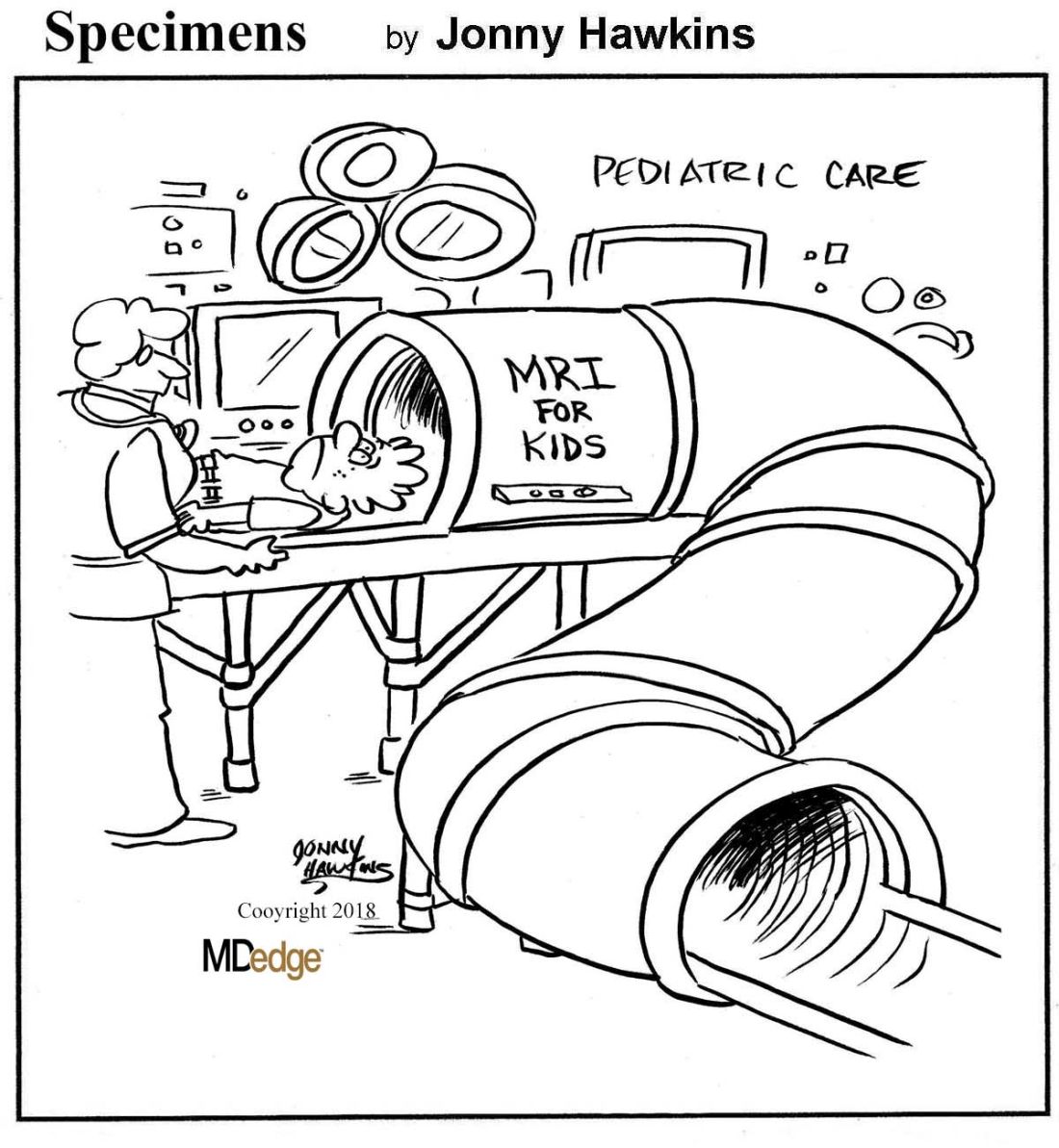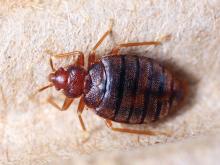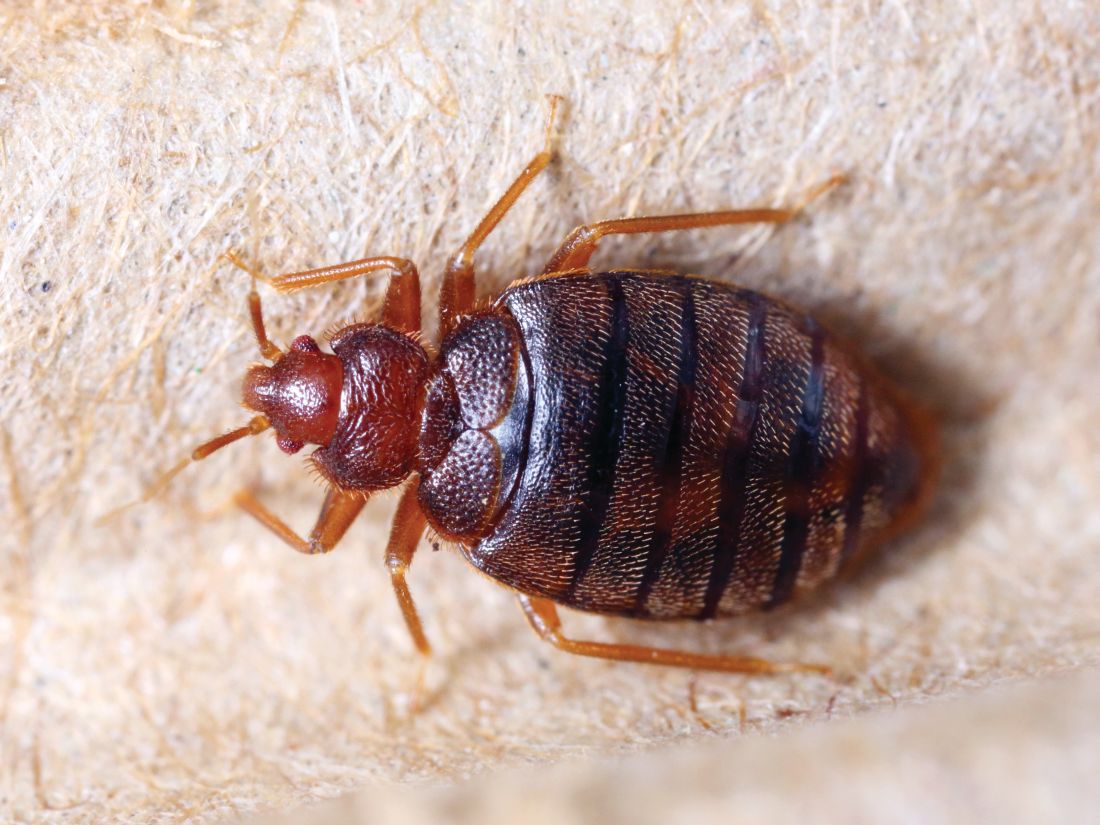User login
Lucas Franki is an associate editor for MDedge News, and has been with the company since 2014. He has a BA in English from Penn State University and is an Eagle Scout.
Human cheddar, bacteria-bashing berries, and constipation amnesia
No celeb cheese, please
You don’t mess with cheese. Cheese is love, cheese is life. But now, science has gone too far by bridging the gap between man and cheese.
In a new London art exhibit, a biologist and an artist teamed up to create different types of cheese made from … British celebs? Look, we love the Spice Girls as much as the next person, but that doesn’t mean we want Baby Spice Brie.
Bacteria taken from their face, armpits, ears, and even bellybuttons were used to create cheddar, Cheshire, and Stilton cheeses, among others. Yum. The goal of the (possibly blasphemous) exhibit is to change people’s view of microbes and demonstrate how they are essential to human existence. The cheesy contributors included Ruby Tandoh from the Great British Bake Off, chef Heston Blumenthal, and Blur bassist Alex James.
The artists and scientists involved did not yet determine if the cheese was safe for human consumption – not that anyone would eat them, anyway.
A poop oops
I’m sure we’ve all been in the position – you’re on your porcelain throne, things aren’t going your way. You’re praying to any and every deity under the sun to get things moving. Maybe you start bargaining … but would you give up a decade’s worth of memories to jump-start your intestines?
One woman in China seems to have made this deal with the devil. After straining a bit too hard during a nasty bout of constipation, the Hong Kong woman emerged from the bathroom displaying signs of amnesia. Her family quickly discovered she could not remember anything from the past 10 years and took her to the hospital, where she was diagnosed with transient global amnesia. The temporary amnesia was caused by an increase in abdominal and intracerebral pressure that limited oxygen flow to her brain.
The woman regained her memories after about 8 hours and had no recollection of the unfortunate series of events. Or so she claims. We imagine she might remember a bit and is going to start stocking up on prune juice from now on.
Juicy, red, and ready to save the world
The Avengers may have finally stopped Thanos, but what could they do against Escherichia coli? And Superman may be more powerful than a locomotive, but could he take on Pseudomonas aeruginosa?
In this week’s episode of Bacteria vs. the World, we meet the superhero the world really needs.
The humble cranberry doesn’t have super speed or an armored flying exoskeleton, but it does have the power to help antibiotics fight the bacterial menace, as researchers at McGill University and Institut National de la Recherche Scientifique, both in Montreal, discovered.
They found that bacteria exposed to a cranberry extract known as proanthocyanidin had increased sensitivity to antibiotics. The extract, it appears, makes bacterial cell walls more permeable to antibiotics and interferes with the pump mechanism that bacteria use to rid themselves of the drugs. “The antibiotic penetrates more easily, and the bacteria have a harder time getting rid of it,” so the drug is effective at a lower dose, they explained.
But wait, there’s more! “When we simultaneously treated the bacteria with an antibiotic and the cranberry extract, no resistance developed. We were very surprised by this,” lead author Nathalie Tufenkji, PhD, said in a written statement.
This is all great news, of course, but we’re a little surprised by their surprise. Here’s why: The scientific name of the American cranberry is Vaccinium macrocarpon. Vaccinium? Coincidence? We think not.
Who needs oncologists anyway?
We’re no strangers to gross-out stories here at Livin’ on the MDedge, but fair warning: This is really up there on the gross-ometer. You may want to brace yourselves.
As with so many good stories, our tale begins with a drunk man vomiting. The 63-year-old man from China had been feeling some discomfort in his throat for some time, especially when eating, but had, up to that point, ignored it. But as the man voided the evening’s mistakes back up to where they came from, something in his throat came loose. Specifically, a meatball-like mass that the man would later describe as a “long, forked tongue.”
Thinking as only a drunk man could, our intrepid friend decided that this object was an integral part of his body and that the best course of action would be to find a glass of water and swallow the mass. However, he did follow this flash of brilliance with an actual good decision, checking himself into the nearest hospital.
As the doctors were examining the man, they discovered the cherry on top of this disgusting story: He’d actually barfed up a tumor. Specifically, a large fibroma, measuring 15 cm by 4 cm, that had taken up residence in the man’s throat. If it hadn’t come out, the fibroma could have continued to grow, potentially obstructing the man’s ability to breathe.
While we’re glad things worked out for our inebriated friend, we’d like to recommend a trip to the doctor for anyone currently having mysterious difficulty swallowing. Don’t make us read about more people throwing up parts of their body. Please.

No celeb cheese, please
You don’t mess with cheese. Cheese is love, cheese is life. But now, science has gone too far by bridging the gap between man and cheese.
In a new London art exhibit, a biologist and an artist teamed up to create different types of cheese made from … British celebs? Look, we love the Spice Girls as much as the next person, but that doesn’t mean we want Baby Spice Brie.
Bacteria taken from their face, armpits, ears, and even bellybuttons were used to create cheddar, Cheshire, and Stilton cheeses, among others. Yum. The goal of the (possibly blasphemous) exhibit is to change people’s view of microbes and demonstrate how they are essential to human existence. The cheesy contributors included Ruby Tandoh from the Great British Bake Off, chef Heston Blumenthal, and Blur bassist Alex James.
The artists and scientists involved did not yet determine if the cheese was safe for human consumption – not that anyone would eat them, anyway.
A poop oops
I’m sure we’ve all been in the position – you’re on your porcelain throne, things aren’t going your way. You’re praying to any and every deity under the sun to get things moving. Maybe you start bargaining … but would you give up a decade’s worth of memories to jump-start your intestines?
One woman in China seems to have made this deal with the devil. After straining a bit too hard during a nasty bout of constipation, the Hong Kong woman emerged from the bathroom displaying signs of amnesia. Her family quickly discovered she could not remember anything from the past 10 years and took her to the hospital, where she was diagnosed with transient global amnesia. The temporary amnesia was caused by an increase in abdominal and intracerebral pressure that limited oxygen flow to her brain.
The woman regained her memories after about 8 hours and had no recollection of the unfortunate series of events. Or so she claims. We imagine she might remember a bit and is going to start stocking up on prune juice from now on.
Juicy, red, and ready to save the world
The Avengers may have finally stopped Thanos, but what could they do against Escherichia coli? And Superman may be more powerful than a locomotive, but could he take on Pseudomonas aeruginosa?
In this week’s episode of Bacteria vs. the World, we meet the superhero the world really needs.
The humble cranberry doesn’t have super speed or an armored flying exoskeleton, but it does have the power to help antibiotics fight the bacterial menace, as researchers at McGill University and Institut National de la Recherche Scientifique, both in Montreal, discovered.
They found that bacteria exposed to a cranberry extract known as proanthocyanidin had increased sensitivity to antibiotics. The extract, it appears, makes bacterial cell walls more permeable to antibiotics and interferes with the pump mechanism that bacteria use to rid themselves of the drugs. “The antibiotic penetrates more easily, and the bacteria have a harder time getting rid of it,” so the drug is effective at a lower dose, they explained.
But wait, there’s more! “When we simultaneously treated the bacteria with an antibiotic and the cranberry extract, no resistance developed. We were very surprised by this,” lead author Nathalie Tufenkji, PhD, said in a written statement.
This is all great news, of course, but we’re a little surprised by their surprise. Here’s why: The scientific name of the American cranberry is Vaccinium macrocarpon. Vaccinium? Coincidence? We think not.
Who needs oncologists anyway?
We’re no strangers to gross-out stories here at Livin’ on the MDedge, but fair warning: This is really up there on the gross-ometer. You may want to brace yourselves.
As with so many good stories, our tale begins with a drunk man vomiting. The 63-year-old man from China had been feeling some discomfort in his throat for some time, especially when eating, but had, up to that point, ignored it. But as the man voided the evening’s mistakes back up to where they came from, something in his throat came loose. Specifically, a meatball-like mass that the man would later describe as a “long, forked tongue.”
Thinking as only a drunk man could, our intrepid friend decided that this object was an integral part of his body and that the best course of action would be to find a glass of water and swallow the mass. However, he did follow this flash of brilliance with an actual good decision, checking himself into the nearest hospital.
As the doctors were examining the man, they discovered the cherry on top of this disgusting story: He’d actually barfed up a tumor. Specifically, a large fibroma, measuring 15 cm by 4 cm, that had taken up residence in the man’s throat. If it hadn’t come out, the fibroma could have continued to grow, potentially obstructing the man’s ability to breathe.
While we’re glad things worked out for our inebriated friend, we’d like to recommend a trip to the doctor for anyone currently having mysterious difficulty swallowing. Don’t make us read about more people throwing up parts of their body. Please.

No celeb cheese, please
You don’t mess with cheese. Cheese is love, cheese is life. But now, science has gone too far by bridging the gap between man and cheese.
In a new London art exhibit, a biologist and an artist teamed up to create different types of cheese made from … British celebs? Look, we love the Spice Girls as much as the next person, but that doesn’t mean we want Baby Spice Brie.
Bacteria taken from their face, armpits, ears, and even bellybuttons were used to create cheddar, Cheshire, and Stilton cheeses, among others. Yum. The goal of the (possibly blasphemous) exhibit is to change people’s view of microbes and demonstrate how they are essential to human existence. The cheesy contributors included Ruby Tandoh from the Great British Bake Off, chef Heston Blumenthal, and Blur bassist Alex James.
The artists and scientists involved did not yet determine if the cheese was safe for human consumption – not that anyone would eat them, anyway.
A poop oops
I’m sure we’ve all been in the position – you’re on your porcelain throne, things aren’t going your way. You’re praying to any and every deity under the sun to get things moving. Maybe you start bargaining … but would you give up a decade’s worth of memories to jump-start your intestines?
One woman in China seems to have made this deal with the devil. After straining a bit too hard during a nasty bout of constipation, the Hong Kong woman emerged from the bathroom displaying signs of amnesia. Her family quickly discovered she could not remember anything from the past 10 years and took her to the hospital, where she was diagnosed with transient global amnesia. The temporary amnesia was caused by an increase in abdominal and intracerebral pressure that limited oxygen flow to her brain.
The woman regained her memories after about 8 hours and had no recollection of the unfortunate series of events. Or so she claims. We imagine she might remember a bit and is going to start stocking up on prune juice from now on.
Juicy, red, and ready to save the world
The Avengers may have finally stopped Thanos, but what could they do against Escherichia coli? And Superman may be more powerful than a locomotive, but could he take on Pseudomonas aeruginosa?
In this week’s episode of Bacteria vs. the World, we meet the superhero the world really needs.
The humble cranberry doesn’t have super speed or an armored flying exoskeleton, but it does have the power to help antibiotics fight the bacterial menace, as researchers at McGill University and Institut National de la Recherche Scientifique, both in Montreal, discovered.
They found that bacteria exposed to a cranberry extract known as proanthocyanidin had increased sensitivity to antibiotics. The extract, it appears, makes bacterial cell walls more permeable to antibiotics and interferes with the pump mechanism that bacteria use to rid themselves of the drugs. “The antibiotic penetrates more easily, and the bacteria have a harder time getting rid of it,” so the drug is effective at a lower dose, they explained.
But wait, there’s more! “When we simultaneously treated the bacteria with an antibiotic and the cranberry extract, no resistance developed. We were very surprised by this,” lead author Nathalie Tufenkji, PhD, said in a written statement.
This is all great news, of course, but we’re a little surprised by their surprise. Here’s why: The scientific name of the American cranberry is Vaccinium macrocarpon. Vaccinium? Coincidence? We think not.
Who needs oncologists anyway?
We’re no strangers to gross-out stories here at Livin’ on the MDedge, but fair warning: This is really up there on the gross-ometer. You may want to brace yourselves.
As with so many good stories, our tale begins with a drunk man vomiting. The 63-year-old man from China had been feeling some discomfort in his throat for some time, especially when eating, but had, up to that point, ignored it. But as the man voided the evening’s mistakes back up to where they came from, something in his throat came loose. Specifically, a meatball-like mass that the man would later describe as a “long, forked tongue.”
Thinking as only a drunk man could, our intrepid friend decided that this object was an integral part of his body and that the best course of action would be to find a glass of water and swallow the mass. However, he did follow this flash of brilliance with an actual good decision, checking himself into the nearest hospital.
As the doctors were examining the man, they discovered the cherry on top of this disgusting story: He’d actually barfed up a tumor. Specifically, a large fibroma, measuring 15 cm by 4 cm, that had taken up residence in the man’s throat. If it hadn’t come out, the fibroma could have continued to grow, potentially obstructing the man’s ability to breathe.
While we’re glad things worked out for our inebriated friend, we’d like to recommend a trip to the doctor for anyone currently having mysterious difficulty swallowing. Don’t make us read about more people throwing up parts of their body. Please.

10-valent pneumococcal conjugate vaccine confers similar protection to boys and girls
according to Heta Nieminen, MD, of the National Institute for Health and Welfare in Tampere, Finland, and associates.
For the study, published in Vaccine, the investigators conducted a post hoc analysis of the phase III/IV, cluster-randomized, double-blind FinIP trial, in which more than 30,000 infants received the PHiD-CV10 vaccine or a placebo. Patients were aged less than 7 months when they received their first vaccination, and received two or three primary doses, plus a booster shot after the age of 11 months (Vaccine. 2019 May 20. doi: 10.1016/j.vaccine.2019.05.033).
In term infants, vaccine effectiveness was similar in boys and girls; while the vaccine worked marginally better in girls, the difference was not significant. Infants who received the 2 + 1 schedule had vaccine effectiveness similar to that of those who received the 3 + 1 schedule. In a smaller subanalysis of 1,519 preterm infants, outcomes of pneumonia were more common, but the vaccine seemed to confer protection, although the sample size was not large enough for statistical significance to be reached.
“The point estimates of vaccine effectiveness suggest protection in both sexes, and also among the preterm and low-birth-weight infants. ... There were no significant differences between the 2 + 1 and 3 + 1 schedules in any of the subgroups analyzed. Based on this study, the 2 + 1 or “Nordic” schedule is sufficient also for the risk groups such as the preterm or low-birth-weight infants,” the investigators concluded.
Five study authors are employees of the National Institute for Health and Welfare, which received funding for the study from GlaxoSmithKline. Four coauthors are employees of GlaxoSmithKline; three of them own shares in the company.
according to Heta Nieminen, MD, of the National Institute for Health and Welfare in Tampere, Finland, and associates.
For the study, published in Vaccine, the investigators conducted a post hoc analysis of the phase III/IV, cluster-randomized, double-blind FinIP trial, in which more than 30,000 infants received the PHiD-CV10 vaccine or a placebo. Patients were aged less than 7 months when they received their first vaccination, and received two or three primary doses, plus a booster shot after the age of 11 months (Vaccine. 2019 May 20. doi: 10.1016/j.vaccine.2019.05.033).
In term infants, vaccine effectiveness was similar in boys and girls; while the vaccine worked marginally better in girls, the difference was not significant. Infants who received the 2 + 1 schedule had vaccine effectiveness similar to that of those who received the 3 + 1 schedule. In a smaller subanalysis of 1,519 preterm infants, outcomes of pneumonia were more common, but the vaccine seemed to confer protection, although the sample size was not large enough for statistical significance to be reached.
“The point estimates of vaccine effectiveness suggest protection in both sexes, and also among the preterm and low-birth-weight infants. ... There were no significant differences between the 2 + 1 and 3 + 1 schedules in any of the subgroups analyzed. Based on this study, the 2 + 1 or “Nordic” schedule is sufficient also for the risk groups such as the preterm or low-birth-weight infants,” the investigators concluded.
Five study authors are employees of the National Institute for Health and Welfare, which received funding for the study from GlaxoSmithKline. Four coauthors are employees of GlaxoSmithKline; three of them own shares in the company.
according to Heta Nieminen, MD, of the National Institute for Health and Welfare in Tampere, Finland, and associates.
For the study, published in Vaccine, the investigators conducted a post hoc analysis of the phase III/IV, cluster-randomized, double-blind FinIP trial, in which more than 30,000 infants received the PHiD-CV10 vaccine or a placebo. Patients were aged less than 7 months when they received their first vaccination, and received two or three primary doses, plus a booster shot after the age of 11 months (Vaccine. 2019 May 20. doi: 10.1016/j.vaccine.2019.05.033).
In term infants, vaccine effectiveness was similar in boys and girls; while the vaccine worked marginally better in girls, the difference was not significant. Infants who received the 2 + 1 schedule had vaccine effectiveness similar to that of those who received the 3 + 1 schedule. In a smaller subanalysis of 1,519 preterm infants, outcomes of pneumonia were more common, but the vaccine seemed to confer protection, although the sample size was not large enough for statistical significance to be reached.
“The point estimates of vaccine effectiveness suggest protection in both sexes, and also among the preterm and low-birth-weight infants. ... There were no significant differences between the 2 + 1 and 3 + 1 schedules in any of the subgroups analyzed. Based on this study, the 2 + 1 or “Nordic” schedule is sufficient also for the risk groups such as the preterm or low-birth-weight infants,” the investigators concluded.
Five study authors are employees of the National Institute for Health and Welfare, which received funding for the study from GlaxoSmithKline. Four coauthors are employees of GlaxoSmithKline; three of them own shares in the company.
FROM VACCINE
FDA approves lenalidomide/rituximab for previously treated FL, MZL
The Food and Drug Administration has approved lenalidomide (Revlimid), in combination with rituximab, for the treatment of adult patients with previously treated follicular or marginal zone lymphoma.
FDA approval is based on results from the randomized, double-blind, phase 3 AUGMENT trial, which evaluated lenalidomide/rituximab versus rituximab and placebo in patients with previously treated follicular or marginal zone lymphoma. The median progression-free survival in those receiving lenalidomide/rituximab was 39.4 months, compared with 14.1 months for those receiving rituximab/placebo (odds ratio, 0.46; 95% confidence interval, 0.34-0.62; P less than .0001).
A numeric trend was seen in overall survival over the follow-up period of 28.3 months (16 vs. 26 deaths; hazard ratio, 0.61; 95% CI, 0.33-1.13).
The most common adverse events associated with lenalidomide/rituximab are neutropenia, diarrhea, constipation, cough, fatigue, rash, pyrexia, leukopenia, pruritus, upper respiratory tract infections, abdominal pain, anemia, headache, and thrombocytopenia. Lenalidomide also contains a boxed warning for embryo-fetal toxicity, hematologic toxicity, and venous and arterial thromboembolism.
“Chemotherapy continues to be a standard of care for indolent forms of NHL, but most patients will relapse or become refractory to their current treatment. This approval represents a new therapeutic option for previously treated patients with follicular and marginal zone lymphomas, including those who relapse or no longer respond to initial treatment,” Meghan Gutierrez, CEO of the Lymphoma Research Foundation, said in a statement.
The Food and Drug Administration has approved lenalidomide (Revlimid), in combination with rituximab, for the treatment of adult patients with previously treated follicular or marginal zone lymphoma.
FDA approval is based on results from the randomized, double-blind, phase 3 AUGMENT trial, which evaluated lenalidomide/rituximab versus rituximab and placebo in patients with previously treated follicular or marginal zone lymphoma. The median progression-free survival in those receiving lenalidomide/rituximab was 39.4 months, compared with 14.1 months for those receiving rituximab/placebo (odds ratio, 0.46; 95% confidence interval, 0.34-0.62; P less than .0001).
A numeric trend was seen in overall survival over the follow-up period of 28.3 months (16 vs. 26 deaths; hazard ratio, 0.61; 95% CI, 0.33-1.13).
The most common adverse events associated with lenalidomide/rituximab are neutropenia, diarrhea, constipation, cough, fatigue, rash, pyrexia, leukopenia, pruritus, upper respiratory tract infections, abdominal pain, anemia, headache, and thrombocytopenia. Lenalidomide also contains a boxed warning for embryo-fetal toxicity, hematologic toxicity, and venous and arterial thromboembolism.
“Chemotherapy continues to be a standard of care for indolent forms of NHL, but most patients will relapse or become refractory to their current treatment. This approval represents a new therapeutic option for previously treated patients with follicular and marginal zone lymphomas, including those who relapse or no longer respond to initial treatment,” Meghan Gutierrez, CEO of the Lymphoma Research Foundation, said in a statement.
The Food and Drug Administration has approved lenalidomide (Revlimid), in combination with rituximab, for the treatment of adult patients with previously treated follicular or marginal zone lymphoma.
FDA approval is based on results from the randomized, double-blind, phase 3 AUGMENT trial, which evaluated lenalidomide/rituximab versus rituximab and placebo in patients with previously treated follicular or marginal zone lymphoma. The median progression-free survival in those receiving lenalidomide/rituximab was 39.4 months, compared with 14.1 months for those receiving rituximab/placebo (odds ratio, 0.46; 95% confidence interval, 0.34-0.62; P less than .0001).
A numeric trend was seen in overall survival over the follow-up period of 28.3 months (16 vs. 26 deaths; hazard ratio, 0.61; 95% CI, 0.33-1.13).
The most common adverse events associated with lenalidomide/rituximab are neutropenia, diarrhea, constipation, cough, fatigue, rash, pyrexia, leukopenia, pruritus, upper respiratory tract infections, abdominal pain, anemia, headache, and thrombocytopenia. Lenalidomide also contains a boxed warning for embryo-fetal toxicity, hematologic toxicity, and venous and arterial thromboembolism.
“Chemotherapy continues to be a standard of care for indolent forms of NHL, but most patients will relapse or become refractory to their current treatment. This approval represents a new therapeutic option for previously treated patients with follicular and marginal zone lymphomas, including those who relapse or no longer respond to initial treatment,” Meghan Gutierrez, CEO of the Lymphoma Research Foundation, said in a statement.
FDA expands use of Vraylar to treatment of bipolar-associated depressive episodes
The Food and Drug Administration on May 28 approved a supplemental New Drug Application for cariprazine (Vraylar) for the treatment of depressive episodes associated with bipolar I disorder.
Approval for the expanded label was based on results of the RGH-MD-53, RGH-MD-54, and RGH-MD-56 clinical trials, in which cariprazine was compared with placebo over a 6-week period in patients with bipolar I disorder. In all three trials, patients receiving 1.5 mg cariprazine had significantly greater improvement in their Montgomery-Åsberg Depression Rating scale after 6 weeks, compared with patients receiving placebo.
Cariprazine previously was indicated for the treatment of manic or mixed episodes associated with bipolar I disorder in adults. The most common adverse reactions reported in the clinical trials were nausea, akathisia, restlessness, and extrapyramidal symptoms; these symptoms are similar to those on the Vraylar label.
“Treating bipolar disorder can be very difficult, because people living with the illness experience a range of depressive and manic symptoms, sometimes both at the same time, and , specifically manic, mixed, and depressive episodes, with just one medication,” Stephen M. Stahl, MD, PhD, professor of psychiatry at the University of California, San Diego, said in the press release.
Find the full press release on the Allergan website.
The Food and Drug Administration on May 28 approved a supplemental New Drug Application for cariprazine (Vraylar) for the treatment of depressive episodes associated with bipolar I disorder.
Approval for the expanded label was based on results of the RGH-MD-53, RGH-MD-54, and RGH-MD-56 clinical trials, in which cariprazine was compared with placebo over a 6-week period in patients with bipolar I disorder. In all three trials, patients receiving 1.5 mg cariprazine had significantly greater improvement in their Montgomery-Åsberg Depression Rating scale after 6 weeks, compared with patients receiving placebo.
Cariprazine previously was indicated for the treatment of manic or mixed episodes associated with bipolar I disorder in adults. The most common adverse reactions reported in the clinical trials were nausea, akathisia, restlessness, and extrapyramidal symptoms; these symptoms are similar to those on the Vraylar label.
“Treating bipolar disorder can be very difficult, because people living with the illness experience a range of depressive and manic symptoms, sometimes both at the same time, and , specifically manic, mixed, and depressive episodes, with just one medication,” Stephen M. Stahl, MD, PhD, professor of psychiatry at the University of California, San Diego, said in the press release.
Find the full press release on the Allergan website.
The Food and Drug Administration on May 28 approved a supplemental New Drug Application for cariprazine (Vraylar) for the treatment of depressive episodes associated with bipolar I disorder.
Approval for the expanded label was based on results of the RGH-MD-53, RGH-MD-54, and RGH-MD-56 clinical trials, in which cariprazine was compared with placebo over a 6-week period in patients with bipolar I disorder. In all three trials, patients receiving 1.5 mg cariprazine had significantly greater improvement in their Montgomery-Åsberg Depression Rating scale after 6 weeks, compared with patients receiving placebo.
Cariprazine previously was indicated for the treatment of manic or mixed episodes associated with bipolar I disorder in adults. The most common adverse reactions reported in the clinical trials were nausea, akathisia, restlessness, and extrapyramidal symptoms; these symptoms are similar to those on the Vraylar label.
“Treating bipolar disorder can be very difficult, because people living with the illness experience a range of depressive and manic symptoms, sometimes both at the same time, and , specifically manic, mixed, and depressive episodes, with just one medication,” Stephen M. Stahl, MD, PhD, professor of psychiatry at the University of California, San Diego, said in the press release.
Find the full press release on the Allergan website.
FDA announces clearance of modified endoscope connector
which was designed to reduce the risk of cross-contamination previously identified by the FDA.
In a letter published April 18, the FDA had written that the original version of the product, the Erbe USA ERBEFLO port connector, was the only one of its type on the market that did not feature a method of backflow prevention, as recommended by new FDA guidelines. As such, the original ERBEFLO device did not adequately reduce the risk of cross-contamination; blood, stool, or other fluids from previous patients could travel through the endoscopy channels, contaminating the connector, tubing, and water bottle.
The FDA approval of the modified ERBEFLO port connector is based on a review of the functional and simulated use testing of the modified device design. The effectiveness of the device at reducing the risk of backflow and contamination is also supported by simulated testing.
Revised labeling included with the product identifies compatible endoscopes and accessories and provides warnings to ensure proper usage.
“The clearance of the modified ERBEFLO 24-hour use port connector provides another option for health care facilities whose staff understand and can fully implement the instructions for use to reduce the risk of cross-contamination and infection,” the FDA said in the May 23 update letter.
which was designed to reduce the risk of cross-contamination previously identified by the FDA.
In a letter published April 18, the FDA had written that the original version of the product, the Erbe USA ERBEFLO port connector, was the only one of its type on the market that did not feature a method of backflow prevention, as recommended by new FDA guidelines. As such, the original ERBEFLO device did not adequately reduce the risk of cross-contamination; blood, stool, or other fluids from previous patients could travel through the endoscopy channels, contaminating the connector, tubing, and water bottle.
The FDA approval of the modified ERBEFLO port connector is based on a review of the functional and simulated use testing of the modified device design. The effectiveness of the device at reducing the risk of backflow and contamination is also supported by simulated testing.
Revised labeling included with the product identifies compatible endoscopes and accessories and provides warnings to ensure proper usage.
“The clearance of the modified ERBEFLO 24-hour use port connector provides another option for health care facilities whose staff understand and can fully implement the instructions for use to reduce the risk of cross-contamination and infection,” the FDA said in the May 23 update letter.
which was designed to reduce the risk of cross-contamination previously identified by the FDA.
In a letter published April 18, the FDA had written that the original version of the product, the Erbe USA ERBEFLO port connector, was the only one of its type on the market that did not feature a method of backflow prevention, as recommended by new FDA guidelines. As such, the original ERBEFLO device did not adequately reduce the risk of cross-contamination; blood, stool, or other fluids from previous patients could travel through the endoscopy channels, contaminating the connector, tubing, and water bottle.
The FDA approval of the modified ERBEFLO port connector is based on a review of the functional and simulated use testing of the modified device design. The effectiveness of the device at reducing the risk of backflow and contamination is also supported by simulated testing.
Revised labeling included with the product identifies compatible endoscopes and accessories and provides warnings to ensure proper usage.
“The clearance of the modified ERBEFLO 24-hour use port connector provides another option for health care facilities whose staff understand and can fully implement the instructions for use to reduce the risk of cross-contamination and infection,” the FDA said in the May 23 update letter.
FDA approves Zolgensma for infantile-onset SMA treatment
The Food and Drug Administration has approved Zolgensma (onasemnogene abeparvovec-xioi), the first gene therapy for the treatment of infantile-onset spinal muscular atrophy in children aged less than 2 years.
The FDA granted the approval of Zolgensma to AveXis Inc.
Spinal muscular atrophy (SMA) is a genetic disorder caused by a mutation in the SMN1 gene, which encodes the survival motor neuron protein. This protein is necessary for motor function throughout the body; without it, motor neurons die, causing severe, often fatal muscle weakness. Infantile-onset SMA is the most severe and most common form of the disease; children will have difficulty holding their head up, swallowing, or breathing. Symptoms can be present at birth or appear by 6 months.
FDA approval of Zolgensma is based on results of a pair of clinical trials – one ongoing, one completed – comprising 36 patients with infantile-onset SMA aged between 2 weeks and 8 months at study entry. Of the 21 patients initially enrolled in the ongoing trial, 19 remain, aged between 9.4 and 18.5 months; most of these patients are at least 14 months. Compared with natural disease course, patients treated with Zolgensma are more likely to reach developmental motor milestones such as head control and the ability to sit without support.
The most common adverse events associated with Zolgensma include elevated liver enzymes and vomiting. The labeling includes a warning that acute serious liver injury can occur, and patients with preexisting liver conditions are at a higher risk for serious liver injury. Liver function should be monitored for at least 3 months following initiation of Zolgensma treatment.
“Children with SMA experience difficulty performing essential functions of life. Most children with this disease do not survive past early childhood due to respiratory failure. Patients with SMA now have another treatment option to minimize the progression of SMA and improve survival,” Peter Marks, MD, PhD, director of the FDA’s Center for Biologics Evaluation and Research, said in the press release.
Find the full press release on the FDA website.
The Food and Drug Administration has approved Zolgensma (onasemnogene abeparvovec-xioi), the first gene therapy for the treatment of infantile-onset spinal muscular atrophy in children aged less than 2 years.
The FDA granted the approval of Zolgensma to AveXis Inc.
Spinal muscular atrophy (SMA) is a genetic disorder caused by a mutation in the SMN1 gene, which encodes the survival motor neuron protein. This protein is necessary for motor function throughout the body; without it, motor neurons die, causing severe, often fatal muscle weakness. Infantile-onset SMA is the most severe and most common form of the disease; children will have difficulty holding their head up, swallowing, or breathing. Symptoms can be present at birth or appear by 6 months.
FDA approval of Zolgensma is based on results of a pair of clinical trials – one ongoing, one completed – comprising 36 patients with infantile-onset SMA aged between 2 weeks and 8 months at study entry. Of the 21 patients initially enrolled in the ongoing trial, 19 remain, aged between 9.4 and 18.5 months; most of these patients are at least 14 months. Compared with natural disease course, patients treated with Zolgensma are more likely to reach developmental motor milestones such as head control and the ability to sit without support.
The most common adverse events associated with Zolgensma include elevated liver enzymes and vomiting. The labeling includes a warning that acute serious liver injury can occur, and patients with preexisting liver conditions are at a higher risk for serious liver injury. Liver function should be monitored for at least 3 months following initiation of Zolgensma treatment.
“Children with SMA experience difficulty performing essential functions of life. Most children with this disease do not survive past early childhood due to respiratory failure. Patients with SMA now have another treatment option to minimize the progression of SMA and improve survival,” Peter Marks, MD, PhD, director of the FDA’s Center for Biologics Evaluation and Research, said in the press release.
Find the full press release on the FDA website.
The Food and Drug Administration has approved Zolgensma (onasemnogene abeparvovec-xioi), the first gene therapy for the treatment of infantile-onset spinal muscular atrophy in children aged less than 2 years.
The FDA granted the approval of Zolgensma to AveXis Inc.
Spinal muscular atrophy (SMA) is a genetic disorder caused by a mutation in the SMN1 gene, which encodes the survival motor neuron protein. This protein is necessary for motor function throughout the body; without it, motor neurons die, causing severe, often fatal muscle weakness. Infantile-onset SMA is the most severe and most common form of the disease; children will have difficulty holding their head up, swallowing, or breathing. Symptoms can be present at birth or appear by 6 months.
FDA approval of Zolgensma is based on results of a pair of clinical trials – one ongoing, one completed – comprising 36 patients with infantile-onset SMA aged between 2 weeks and 8 months at study entry. Of the 21 patients initially enrolled in the ongoing trial, 19 remain, aged between 9.4 and 18.5 months; most of these patients are at least 14 months. Compared with natural disease course, patients treated with Zolgensma are more likely to reach developmental motor milestones such as head control and the ability to sit without support.
The most common adverse events associated with Zolgensma include elevated liver enzymes and vomiting. The labeling includes a warning that acute serious liver injury can occur, and patients with preexisting liver conditions are at a higher risk for serious liver injury. Liver function should be monitored for at least 3 months following initiation of Zolgensma treatment.
“Children with SMA experience difficulty performing essential functions of life. Most children with this disease do not survive past early childhood due to respiratory failure. Patients with SMA now have another treatment option to minimize the progression of SMA and improve survival,” Peter Marks, MD, PhD, director of the FDA’s Center for Biologics Evaluation and Research, said in the press release.
Find the full press release on the FDA website.
Bed bug fossils, dogs in your DNA, and coffee colon
Goodnight, sleep tight ...
File this under creepy-crawly things you never wanted to learn about but now you know. New research into cimicid fossils (a.k.a. bed bugs) shows that the blood-sucking parasites are as old as the dinosaurs.
Bed bugs have been on earth for 115 million years – approximately the same amount of time it takes to get rid of them from your home.
Bats have long been assumed to be the ancestral host of these horrific pests, but a bed bug fossil shows that they precede bats by nearly 30 million years. The idea of a bed bug “fossil” is a little suspicious to us over here at LOTME, though, because we are pretty positive bed bugs only multiply and never die.
The new research, published in Cell, confirmed that the bed bug species had a major split into the two most common forms millions of years before humans arrived. Also confirmed: Dinosaurs clearly slept in beds, and that’s where bed bugs came from.
Dog person? It’s in the genes
Are you a total dog lover? Would you totally risk a little infectious bug if you got to play with some pups? Turns out, your love for Fido might be predicted by your DNA.
An in-depth examination of the Swedish Twin Registry and national dog registers in Sweden found that genetic factors greatly contribute to dog ownership in Sweden. The study could not identify which genes are involved in our choices to keep dogs or if they related to evolution-related factors.
This is good news for dog people, though, because it suggests that if you love dogs, so does your family, and therefore you will be surrounded by dogs forever. At least that is what we’re choosing to believe.
This study could not be repeated with cat owners, because everyone knows cats own their humans, and the cats of Sweden were not interested in participating.
Gastroenterologists answer the big questions
Why does coffee make you poop? All coffee drinkers know this to be the case, and many even plan their mornings around it. But the real reason for this little side effect has always been a bit of a mystery.
Now, a group of researchers from the University of Texas may have an answer.
In a study presented at the annual Digestive Disease Week, the researchers fed coffee to rats for 3 days, analyzing their feces for changes in composition and bacterial make-up. (The joys of being a scientist.) They found that this diet suppressed the bacterial content of the feces; in addition, bacterial growth within the poop was suppressed when exposed to a 1.5% coffee solution on a petri dish.
An analysis of the rats’ intestines – dream job material right there – showed increased muscular motility. All of these effects occurred regardless of caffeine content.
And here’s a bonus: This was more than research just for research’s sake! The researchers claim that, given future study into the subject, coffee could be used as a treatment for ileus, a condition encountered after surgery where the intestines stop working. Apparently, it’s not just your brain that needs to be woken up – even your digestive system could use a coffee now and again.
Big honor for a small pharmaceutical partner
This week, we ask an important medical question: What’s your favorite microbe? Think about that for a minute while we discuss New Jersey’s new bacterial BFF.
S. griseus, it turns out, was discovered in the soil of New Jersey in 1916 and also was “isolated from the gullet of a healthy New Jersey chicken.” In 1943, researchers from Rutgers University (the state university of New Jersey, by the way) used it to create streptomycin, the first antibiotic to treat cholera and tuberculosis. In 1952, Rutgers researcher Selman Waksman received a Nobel Prize for discovering the microbe and creating the antibiotic.
LOTME certainly acknowledges the place of S. griseus in history, but we’ve selected another significant organism as our official microbe: Saccharomyces cerevisiae, also known as brewer’s yeast.
And since we know you were wondering, our official amphibian is the Eastern Hellbender salamander, our official fabric is Carrickmacross lace, our official soil is Harney silt loam, our official fictional opera singer is Placebo Domingo, and our official sport is jousting.

Goodnight, sleep tight ...
File this under creepy-crawly things you never wanted to learn about but now you know. New research into cimicid fossils (a.k.a. bed bugs) shows that the blood-sucking parasites are as old as the dinosaurs.
Bed bugs have been on earth for 115 million years – approximately the same amount of time it takes to get rid of them from your home.
Bats have long been assumed to be the ancestral host of these horrific pests, but a bed bug fossil shows that they precede bats by nearly 30 million years. The idea of a bed bug “fossil” is a little suspicious to us over here at LOTME, though, because we are pretty positive bed bugs only multiply and never die.
The new research, published in Cell, confirmed that the bed bug species had a major split into the two most common forms millions of years before humans arrived. Also confirmed: Dinosaurs clearly slept in beds, and that’s where bed bugs came from.
Dog person? It’s in the genes
Are you a total dog lover? Would you totally risk a little infectious bug if you got to play with some pups? Turns out, your love for Fido might be predicted by your DNA.
An in-depth examination of the Swedish Twin Registry and national dog registers in Sweden found that genetic factors greatly contribute to dog ownership in Sweden. The study could not identify which genes are involved in our choices to keep dogs or if they related to evolution-related factors.
This is good news for dog people, though, because it suggests that if you love dogs, so does your family, and therefore you will be surrounded by dogs forever. At least that is what we’re choosing to believe.
This study could not be repeated with cat owners, because everyone knows cats own their humans, and the cats of Sweden were not interested in participating.
Gastroenterologists answer the big questions
Why does coffee make you poop? All coffee drinkers know this to be the case, and many even plan their mornings around it. But the real reason for this little side effect has always been a bit of a mystery.
Now, a group of researchers from the University of Texas may have an answer.
In a study presented at the annual Digestive Disease Week, the researchers fed coffee to rats for 3 days, analyzing their feces for changes in composition and bacterial make-up. (The joys of being a scientist.) They found that this diet suppressed the bacterial content of the feces; in addition, bacterial growth within the poop was suppressed when exposed to a 1.5% coffee solution on a petri dish.
An analysis of the rats’ intestines – dream job material right there – showed increased muscular motility. All of these effects occurred regardless of caffeine content.
And here’s a bonus: This was more than research just for research’s sake! The researchers claim that, given future study into the subject, coffee could be used as a treatment for ileus, a condition encountered after surgery where the intestines stop working. Apparently, it’s not just your brain that needs to be woken up – even your digestive system could use a coffee now and again.
Big honor for a small pharmaceutical partner
This week, we ask an important medical question: What’s your favorite microbe? Think about that for a minute while we discuss New Jersey’s new bacterial BFF.
S. griseus, it turns out, was discovered in the soil of New Jersey in 1916 and also was “isolated from the gullet of a healthy New Jersey chicken.” In 1943, researchers from Rutgers University (the state university of New Jersey, by the way) used it to create streptomycin, the first antibiotic to treat cholera and tuberculosis. In 1952, Rutgers researcher Selman Waksman received a Nobel Prize for discovering the microbe and creating the antibiotic.
LOTME certainly acknowledges the place of S. griseus in history, but we’ve selected another significant organism as our official microbe: Saccharomyces cerevisiae, also known as brewer’s yeast.
And since we know you were wondering, our official amphibian is the Eastern Hellbender salamander, our official fabric is Carrickmacross lace, our official soil is Harney silt loam, our official fictional opera singer is Placebo Domingo, and our official sport is jousting.

Goodnight, sleep tight ...
File this under creepy-crawly things you never wanted to learn about but now you know. New research into cimicid fossils (a.k.a. bed bugs) shows that the blood-sucking parasites are as old as the dinosaurs.
Bed bugs have been on earth for 115 million years – approximately the same amount of time it takes to get rid of them from your home.
Bats have long been assumed to be the ancestral host of these horrific pests, but a bed bug fossil shows that they precede bats by nearly 30 million years. The idea of a bed bug “fossil” is a little suspicious to us over here at LOTME, though, because we are pretty positive bed bugs only multiply and never die.
The new research, published in Cell, confirmed that the bed bug species had a major split into the two most common forms millions of years before humans arrived. Also confirmed: Dinosaurs clearly slept in beds, and that’s where bed bugs came from.
Dog person? It’s in the genes
Are you a total dog lover? Would you totally risk a little infectious bug if you got to play with some pups? Turns out, your love for Fido might be predicted by your DNA.
An in-depth examination of the Swedish Twin Registry and national dog registers in Sweden found that genetic factors greatly contribute to dog ownership in Sweden. The study could not identify which genes are involved in our choices to keep dogs or if they related to evolution-related factors.
This is good news for dog people, though, because it suggests that if you love dogs, so does your family, and therefore you will be surrounded by dogs forever. At least that is what we’re choosing to believe.
This study could not be repeated with cat owners, because everyone knows cats own their humans, and the cats of Sweden were not interested in participating.
Gastroenterologists answer the big questions
Why does coffee make you poop? All coffee drinkers know this to be the case, and many even plan their mornings around it. But the real reason for this little side effect has always been a bit of a mystery.
Now, a group of researchers from the University of Texas may have an answer.
In a study presented at the annual Digestive Disease Week, the researchers fed coffee to rats for 3 days, analyzing their feces for changes in composition and bacterial make-up. (The joys of being a scientist.) They found that this diet suppressed the bacterial content of the feces; in addition, bacterial growth within the poop was suppressed when exposed to a 1.5% coffee solution on a petri dish.
An analysis of the rats’ intestines – dream job material right there – showed increased muscular motility. All of these effects occurred regardless of caffeine content.
And here’s a bonus: This was more than research just for research’s sake! The researchers claim that, given future study into the subject, coffee could be used as a treatment for ileus, a condition encountered after surgery where the intestines stop working. Apparently, it’s not just your brain that needs to be woken up – even your digestive system could use a coffee now and again.
Big honor for a small pharmaceutical partner
This week, we ask an important medical question: What’s your favorite microbe? Think about that for a minute while we discuss New Jersey’s new bacterial BFF.
S. griseus, it turns out, was discovered in the soil of New Jersey in 1916 and also was “isolated from the gullet of a healthy New Jersey chicken.” In 1943, researchers from Rutgers University (the state university of New Jersey, by the way) used it to create streptomycin, the first antibiotic to treat cholera and tuberculosis. In 1952, Rutgers researcher Selman Waksman received a Nobel Prize for discovering the microbe and creating the antibiotic.
LOTME certainly acknowledges the place of S. griseus in history, but we’ve selected another significant organism as our official microbe: Saccharomyces cerevisiae, also known as brewer’s yeast.
And since we know you were wondering, our official amphibian is the Eastern Hellbender salamander, our official fabric is Carrickmacross lace, our official soil is Harney silt loam, our official fictional opera singer is Placebo Domingo, and our official sport is jousting.

California kindergarten nonvaccination rate on rise again
from immunizations, according to Paul L. Delamater, PhD, of the University of North Carolina at Chapel Hill, and associates.
The investigators focused on vaccination data collected from 2015 – the last year before the passage of SB 277 – to 2017. They also analyzed county-level data collected from 2000 to 2014 to assess demographic behavior. In 2015, the rate of nonvaccination was 7.15%, decreasing to 4.42% in 2016. This decrease was almost entirely caused by a reduction in the rate of conditional entrants, which fell from 4.43% to 1.91%, and in personal belief exceptions, which fell from 2.37% to 0.56%.
While the rates of conditional entrants and personal belief exceptions continued to fall in 2017, other mechanisms allowed the overall rate of kindergarteners not fully up to date on their vaccines to jump to 4.87%. This was fueled by a slight increase in medical exceptions (from 0.51% in 2016 to 0.73% in 2017), and a significant increase in children who were overdue or exempt, which both increased from 0 in 2014 to over 1% by 2017.
“Although the law was successful in reducing the number of students with personal belief exemptions, our analysis reveals that a replacement effect may have stifled a larger increase in students entering kindergarten who are up to date on vaccination. ... Given these findings, policymakers should consider the various options available to increase vaccination coverage or strategies to minimize potential unintended consequences of eliminating nonmedical exemptions such as the replacement effect observed in California,” the investigators reported in Pediatrics (2019, May 21 doi: 10.1542/peds.2018-3301.
One coauthor reported receiving research and consulting support from Pfizer, Merck, and Walgreens; another reported receiving research support from Pfizer, Merck, GlaxoSmithKline, Sanofi Pasteur, Protein Science (now Sanofi Pasteur), Dynavax, and MedImmune.
from immunizations, according to Paul L. Delamater, PhD, of the University of North Carolina at Chapel Hill, and associates.
The investigators focused on vaccination data collected from 2015 – the last year before the passage of SB 277 – to 2017. They also analyzed county-level data collected from 2000 to 2014 to assess demographic behavior. In 2015, the rate of nonvaccination was 7.15%, decreasing to 4.42% in 2016. This decrease was almost entirely caused by a reduction in the rate of conditional entrants, which fell from 4.43% to 1.91%, and in personal belief exceptions, which fell from 2.37% to 0.56%.
While the rates of conditional entrants and personal belief exceptions continued to fall in 2017, other mechanisms allowed the overall rate of kindergarteners not fully up to date on their vaccines to jump to 4.87%. This was fueled by a slight increase in medical exceptions (from 0.51% in 2016 to 0.73% in 2017), and a significant increase in children who were overdue or exempt, which both increased from 0 in 2014 to over 1% by 2017.
“Although the law was successful in reducing the number of students with personal belief exemptions, our analysis reveals that a replacement effect may have stifled a larger increase in students entering kindergarten who are up to date on vaccination. ... Given these findings, policymakers should consider the various options available to increase vaccination coverage or strategies to minimize potential unintended consequences of eliminating nonmedical exemptions such as the replacement effect observed in California,” the investigators reported in Pediatrics (2019, May 21 doi: 10.1542/peds.2018-3301.
One coauthor reported receiving research and consulting support from Pfizer, Merck, and Walgreens; another reported receiving research support from Pfizer, Merck, GlaxoSmithKline, Sanofi Pasteur, Protein Science (now Sanofi Pasteur), Dynavax, and MedImmune.
from immunizations, according to Paul L. Delamater, PhD, of the University of North Carolina at Chapel Hill, and associates.
The investigators focused on vaccination data collected from 2015 – the last year before the passage of SB 277 – to 2017. They also analyzed county-level data collected from 2000 to 2014 to assess demographic behavior. In 2015, the rate of nonvaccination was 7.15%, decreasing to 4.42% in 2016. This decrease was almost entirely caused by a reduction in the rate of conditional entrants, which fell from 4.43% to 1.91%, and in personal belief exceptions, which fell from 2.37% to 0.56%.
While the rates of conditional entrants and personal belief exceptions continued to fall in 2017, other mechanisms allowed the overall rate of kindergarteners not fully up to date on their vaccines to jump to 4.87%. This was fueled by a slight increase in medical exceptions (from 0.51% in 2016 to 0.73% in 2017), and a significant increase in children who were overdue or exempt, which both increased from 0 in 2014 to over 1% by 2017.
“Although the law was successful in reducing the number of students with personal belief exemptions, our analysis reveals that a replacement effect may have stifled a larger increase in students entering kindergarten who are up to date on vaccination. ... Given these findings, policymakers should consider the various options available to increase vaccination coverage or strategies to minimize potential unintended consequences of eliminating nonmedical exemptions such as the replacement effect observed in California,” the investigators reported in Pediatrics (2019, May 21 doi: 10.1542/peds.2018-3301.
One coauthor reported receiving research and consulting support from Pfizer, Merck, and Walgreens; another reported receiving research support from Pfizer, Merck, GlaxoSmithKline, Sanofi Pasteur, Protein Science (now Sanofi Pasteur), Dynavax, and MedImmune.
FROM PEDIATRICS
Th17-associated cytokines, CRP fail as biomarkers for ustekinumab success in PsA
Neither baseline Th17-associated cytokines nor C-reactive protein levels were predictive of response to ustekinumab in patients with psoriatic arthritis, despite significant reductions following treatment, according to Stefan Siebert, PhD, of the University of Glasgow (Scotland) and associates.
In a study published in Arthritis & Rheumatology, the authors retrospectively analyzed serum samples collected from 927 patients with psoriatic arthritis who participated in the phase 3 PSUMMIT trials. Patients received ustekinumab (Stelara) or placebo, and samples were collected at baseline, 4 weeks, and 24 weeks.
At baseline, interleukin-17A, -17F, and -23 levels were associated with skin disease scores, but neither these nor C-reactive protein (CRP) were associated with joint disease scores. While IL-17A, IL-17F, and CRP were reduced in patients who responded to ustekinumab, baseline levels of IL-17A, IL-17F, IL-23, and CRP were not associated with ustekinumab response in either skin or joints.
In patients who achieved a 75% reduction in their Psoriasis Area and Severity Index scores or a 20% reduction in their American College of Rheumatology response score after 24 weeks, CRP levels were significantly lower than in patients who did not achieve these scores (51%-58% vs. 32%-33%; P less than .05). However, IL-17A and IL-17F levels were not significantly different in these patients.
“While the biomarkers studied in the PSUMMIT program did not translate into therapeutic utility, it is important that relevant biomarker studies associated with phase 3 clinical trial programs are published in order to increase our understanding of this complex disease and further dissect the role of the IL-23/IL-17 pathway,” the investigators concluded.
The study was funded by Janssen; four coauthors reported being employed with Janssen.
SOURCE: Siebert S et al. Arthritis Rheumatol. 2019 May 9. doi: 10.1002/art.40921.
Neither baseline Th17-associated cytokines nor C-reactive protein levels were predictive of response to ustekinumab in patients with psoriatic arthritis, despite significant reductions following treatment, according to Stefan Siebert, PhD, of the University of Glasgow (Scotland) and associates.
In a study published in Arthritis & Rheumatology, the authors retrospectively analyzed serum samples collected from 927 patients with psoriatic arthritis who participated in the phase 3 PSUMMIT trials. Patients received ustekinumab (Stelara) or placebo, and samples were collected at baseline, 4 weeks, and 24 weeks.
At baseline, interleukin-17A, -17F, and -23 levels were associated with skin disease scores, but neither these nor C-reactive protein (CRP) were associated with joint disease scores. While IL-17A, IL-17F, and CRP were reduced in patients who responded to ustekinumab, baseline levels of IL-17A, IL-17F, IL-23, and CRP were not associated with ustekinumab response in either skin or joints.
In patients who achieved a 75% reduction in their Psoriasis Area and Severity Index scores or a 20% reduction in their American College of Rheumatology response score after 24 weeks, CRP levels were significantly lower than in patients who did not achieve these scores (51%-58% vs. 32%-33%; P less than .05). However, IL-17A and IL-17F levels were not significantly different in these patients.
“While the biomarkers studied in the PSUMMIT program did not translate into therapeutic utility, it is important that relevant biomarker studies associated with phase 3 clinical trial programs are published in order to increase our understanding of this complex disease and further dissect the role of the IL-23/IL-17 pathway,” the investigators concluded.
The study was funded by Janssen; four coauthors reported being employed with Janssen.
SOURCE: Siebert S et al. Arthritis Rheumatol. 2019 May 9. doi: 10.1002/art.40921.
Neither baseline Th17-associated cytokines nor C-reactive protein levels were predictive of response to ustekinumab in patients with psoriatic arthritis, despite significant reductions following treatment, according to Stefan Siebert, PhD, of the University of Glasgow (Scotland) and associates.
In a study published in Arthritis & Rheumatology, the authors retrospectively analyzed serum samples collected from 927 patients with psoriatic arthritis who participated in the phase 3 PSUMMIT trials. Patients received ustekinumab (Stelara) or placebo, and samples were collected at baseline, 4 weeks, and 24 weeks.
At baseline, interleukin-17A, -17F, and -23 levels were associated with skin disease scores, but neither these nor C-reactive protein (CRP) were associated with joint disease scores. While IL-17A, IL-17F, and CRP were reduced in patients who responded to ustekinumab, baseline levels of IL-17A, IL-17F, IL-23, and CRP were not associated with ustekinumab response in either skin or joints.
In patients who achieved a 75% reduction in their Psoriasis Area and Severity Index scores or a 20% reduction in their American College of Rheumatology response score after 24 weeks, CRP levels were significantly lower than in patients who did not achieve these scores (51%-58% vs. 32%-33%; P less than .05). However, IL-17A and IL-17F levels were not significantly different in these patients.
“While the biomarkers studied in the PSUMMIT program did not translate into therapeutic utility, it is important that relevant biomarker studies associated with phase 3 clinical trial programs are published in order to increase our understanding of this complex disease and further dissect the role of the IL-23/IL-17 pathway,” the investigators concluded.
The study was funded by Janssen; four coauthors reported being employed with Janssen.
SOURCE: Siebert S et al. Arthritis Rheumatol. 2019 May 9. doi: 10.1002/art.40921.
FROM ARTHRITIS & RHEUMATOLOGY
EMA: Stop high-dose Xeljanz in certain patients
The Pharmacovigilance Risk Assessment Committee (PRAC) of the European Medicines Agency has recommended that patients at high risk of blood clots in the lungs should not be prescribed the 10-mg, twice-daily dose of tofacitinib (Xeljanz).
The PRAC recommendation is based on results from an ongoing study of patients with rheumatoid arthritis (RA), which has shown that patients receiving the 10-mg, twice-daily dose – twice the approved dose for RA – are at an increased risk of blood clots in the lungs and death.
Patients at risk include those with heart failure, cancer, inherited blood clotting disorders, or a history of blood clots, as well as patients who take combined hormonal contraceptives, are receiving hormone replacement therapy, or are undergoing major surgery. In addition, age, obesity, smoking, or immobilization should also be considered as risk factors.
In Europe, tofacitinib is indicated for the treatment of RA, psoriatic arthritis, and severe ulcerative colitis. Because the 10-mg dose is the only indicated treatment for ulcerative colitis, patients with the disease and who are at high risk should not be started on tofacitinib, and patients who are already taking the drug should be switched to a different treatment.
“The new recommendations are temporary and follow previous PRAC advice not to exceed the recommended 5-mg, twice-daily dose when treating rheumatoid arthritis. The PRAC will now carry out a review of all available evidence, and updated guidance will be provided to patients and healthcare professionals once the review is concluded,” according to the European Medicines Agency.
Find the full press release on the European Medicines Agency website.
The Pharmacovigilance Risk Assessment Committee (PRAC) of the European Medicines Agency has recommended that patients at high risk of blood clots in the lungs should not be prescribed the 10-mg, twice-daily dose of tofacitinib (Xeljanz).
The PRAC recommendation is based on results from an ongoing study of patients with rheumatoid arthritis (RA), which has shown that patients receiving the 10-mg, twice-daily dose – twice the approved dose for RA – are at an increased risk of blood clots in the lungs and death.
Patients at risk include those with heart failure, cancer, inherited blood clotting disorders, or a history of blood clots, as well as patients who take combined hormonal contraceptives, are receiving hormone replacement therapy, or are undergoing major surgery. In addition, age, obesity, smoking, or immobilization should also be considered as risk factors.
In Europe, tofacitinib is indicated for the treatment of RA, psoriatic arthritis, and severe ulcerative colitis. Because the 10-mg dose is the only indicated treatment for ulcerative colitis, patients with the disease and who are at high risk should not be started on tofacitinib, and patients who are already taking the drug should be switched to a different treatment.
“The new recommendations are temporary and follow previous PRAC advice not to exceed the recommended 5-mg, twice-daily dose when treating rheumatoid arthritis. The PRAC will now carry out a review of all available evidence, and updated guidance will be provided to patients and healthcare professionals once the review is concluded,” according to the European Medicines Agency.
Find the full press release on the European Medicines Agency website.
The Pharmacovigilance Risk Assessment Committee (PRAC) of the European Medicines Agency has recommended that patients at high risk of blood clots in the lungs should not be prescribed the 10-mg, twice-daily dose of tofacitinib (Xeljanz).
The PRAC recommendation is based on results from an ongoing study of patients with rheumatoid arthritis (RA), which has shown that patients receiving the 10-mg, twice-daily dose – twice the approved dose for RA – are at an increased risk of blood clots in the lungs and death.
Patients at risk include those with heart failure, cancer, inherited blood clotting disorders, or a history of blood clots, as well as patients who take combined hormonal contraceptives, are receiving hormone replacement therapy, or are undergoing major surgery. In addition, age, obesity, smoking, or immobilization should also be considered as risk factors.
In Europe, tofacitinib is indicated for the treatment of RA, psoriatic arthritis, and severe ulcerative colitis. Because the 10-mg dose is the only indicated treatment for ulcerative colitis, patients with the disease and who are at high risk should not be started on tofacitinib, and patients who are already taking the drug should be switched to a different treatment.
“The new recommendations are temporary and follow previous PRAC advice not to exceed the recommended 5-mg, twice-daily dose when treating rheumatoid arthritis. The PRAC will now carry out a review of all available evidence, and updated guidance will be provided to patients and healthcare professionals once the review is concluded,” according to the European Medicines Agency.
Find the full press release on the European Medicines Agency website.











